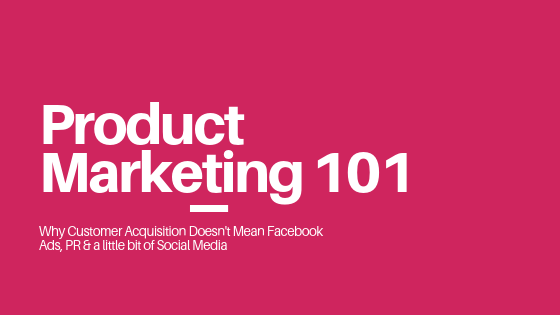If anyone asked me about customer acquisition a while back, I would have said that it’s a little bit about ads on Facebook & Google, a little bit about PR, and a little bit about social media. Back then, I never considered distribution a top priority, but now I know better!
Boy was I wrong!
The most important element of a go-to-market plan (more important than the budget, in my opinion) is the distribution strategy. The earlier you think about distribution, the more time you have to adapt your product and develop new features, or plan ahead so you can spread the word about your baby faster.
Let me give you a real example.
A couple of months ago, we were pushing to acquire users for a fintech app. As you can imagine, in this industry, traditional channels don’t work as they would do for any other app. Users are pickier, and the products are harder to explain.
After launching the app and running some install campaigns, we discovered that once users use the app and understand its value, they tend to recommend it to their friends and family. The app already had a built-in feature to invite friends, but it wasn’t super user-friendly, and the whole invite process wasn’t working smoothly.
We’ve improved the feature and planned an incentive campaign to push more in this direction, but we’re still working on this. See? If we had had this insight before launch, the Invite Friends feature could have been the main channel to drive traction for the product.
So what did we learned from this?
Think distribution first!
A product that nails distribution will attract all the users it needs.
There are two things you can do to make sure you’re planning ahead:
1. Map out your customers’ ecosystem! Think about the social networks they use, the mobile apps they have installed, online services they use or pay for, events they attend, outlets they read, online communities they join, social influencers they follow, etc. Then, make sure you include all these channels in your go-to-market plan and approach your users on all these mediums.
2. Design catchy incentives! People are not going to use your product just because you promote it. Think about incentives (both financial and non-financial) that you can offer to enforce your messages and make your campaign stick. Sometimes these incentives could be premium features, discounts, cash prices, depending on your positioning. But always be ready to answer: what’s in it for your users?
Do you know what comes before distribution? Actually writing your content! So if you’d like to learn more about product marketing for startups make sure you read this article.
This snippet is part of a weekly newsletter that we send to our subscribers. Want to be the first to know about the latest lessons we learn by helping our clients grow? Subscribe below!

